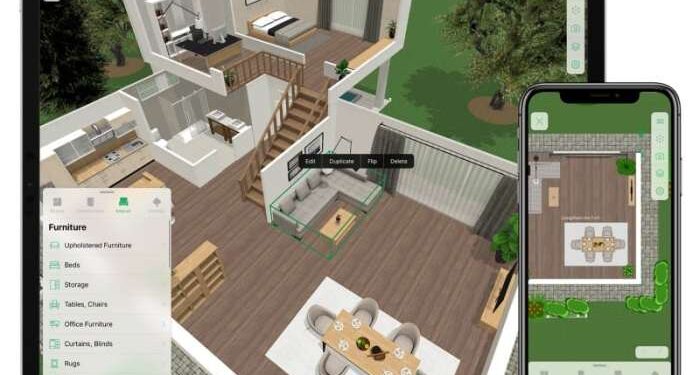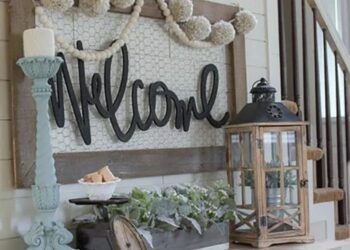Best Tools and Apps for DIY Home Interior Planning sets the stage for this enthralling narrative, offering readers a glimpse into a story that is rich in detail and brimming with originality from the outset.
As we delve into the world of interior design tools and apps, we uncover a treasure trove of possibilities that can transform your living spaces with ease and creativity.
Researching Tools and Apps
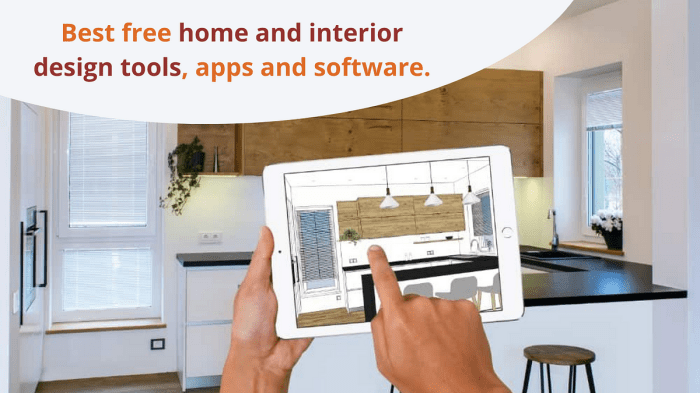
When it comes to DIY home interior planning, there are several popular tools and apps available to assist homeowners in visualizing and designing their spaces. These tools offer a range of features to help streamline the planning process and bring ideas to life.
Popular Tools and Apps
- 1. Houzz: Houzz is a widely used platform that offers a plethora of interior design ideas, photos, and articles. It also provides a feature where users can create mood boards and visualize different design elements.
- 2. Planner 5D: This app allows users to create detailed floor plans and 3D models of their spaces. It offers a vast catalog of furniture and decor items to experiment with different design options.
- 3. Pinterest: While not specifically an interior design app, Pinterest is a treasure trove of design inspiration. Users can create boards, save ideas, and explore endless possibilities for home decor.
Key Features of Tools and Apps
- Houzz: User-friendly interface, extensive design inspiration, mood board creation, product sourcing.
- Planner 5D: Detailed floor planning, 3D modeling, vast furniture catalog, realistic visualization.
- Pinterest: Endless design inspiration, idea boards, user-curated content, diverse decor styles.
Comparison Based on User Reviews and Ratings
- Houzz: Highly rated for its vast design inspiration and user-friendly interface. Some users appreciate the product sourcing feature for easy purchasing.
- Planner 5D: Users praise the detailed floor planning and 3D modeling capabilities, but some find the learning curve steep for beginners.
- Pinterest: Known for its endless design inspiration and user-curated content, Pinterest is favored for its diverse decor styles and DIY ideas.
Design and Layout Planning
When it comes to DIY home interior planning, designing and layout are crucial aspects that can make or break the overall look and feel of a room. Utilizing tools and apps can greatly facilitate this process, allowing for efficient and accurate planning.One of the key functions of these tools is assisting users in designing room layouts.
They provide a user-friendly interface where you can drag and drop various elements such as furniture, decor, and fixtures to visualize how they would look in your space.
Customization Options for Furniture Placement
- Users can customize the size, shape, and orientation of furniture pieces to accurately reflect their existing or desired furniture.
- Adjusting the placement of furniture allows for experimentation with different layouts to optimize space and functionality.
- Some tools even offer a 3D view to provide a more realistic representation of the room layout.
Importance of Accurate Measurements
- Accurate measurements are essential for creating a virtual room layout that closely resembles your actual space.
- Tools often provide measurement tools to ensure precise placement of furniture and fixtures.
- Having accurate measurements helps in avoiding costly mistakes and allows for better planning and visualization of the final design.
Color Schemes and Palettes
When it comes to DIY home interior planning, choosing the right color schemes and palettes is crucial in creating a harmonious and inviting space. Colors have the power to evoke emotions, set the mood, and reflect your personal style. In this section, we will explore how tools suggest color schemes and palettes for interior design, discuss the significance of color psychology in home decor, and share tips on coordinating colors for walls, furniture, and decor items.
Tools for Suggesting Color Schemes
Many tools and apps available for DIY home interior planning offer features that suggest color schemes and palettes based on various factors such as room size, natural light, and personal preferences
Significance of Color Psychology in Home Decor
Color psychology plays a significant role in home decor as different colors can elicit specific emotions and impact the overall ambiance of a room. For example, warm tones like red and orange are known to create a cozy and energetic atmosphere, while cool tones like blue and green promote relaxation and tranquility.
Understanding the psychology behind colors can help you choose the right hues to achieve the desired mood in each room.
Tips for Coordinating Colors
- Start with a base color: Choose a primary color for the walls or larger furniture pieces as a base for the color scheme.
- Use the 60-30-10 rule: Divide the colors into 60% dominant color, 30% secondary color, and 10% accent color to create a balanced look.
- Consider the room's function: Different colors can influence productivity, relaxation, or social interactions, so select colors based on the room's purpose.
- Experiment with different shades: Mix light and dark shades of the same color to add depth and visual interest to the space.
Virtual Reality and Augmented Reality
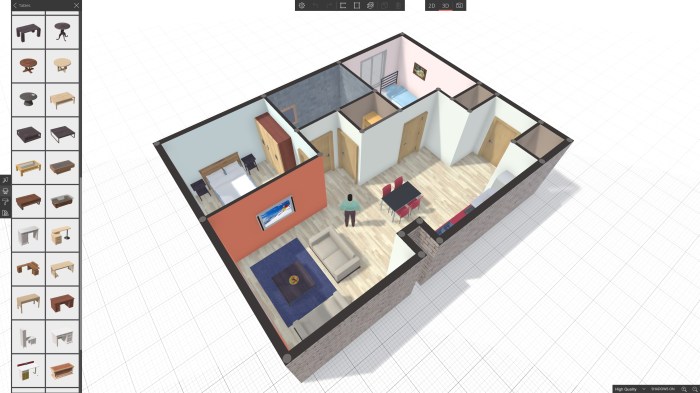
Virtual Reality (VR) and Augmented Reality (AR) features have revolutionized the DIY home interior planning experience by allowing users to visualize their designs in a realistic and immersive way. These technologies provide a more interactive and engaging platform for users to explore different design options and make informed decisions before making any changes to their living spaces.
Enhanced Visualization
Using VR and AR tools, users can virtually walk through their redesigned spaces, experiencing the layout, furniture placement, and color schemes as if they were actually there. This level of immersion helps users get a better sense of how the final design will look and feel in a real-world setting, making it easier to make adjustments and improvements to their initial plans.
Real-World Integration
One of the key benefits of VR and AR for DIY home interior planning is the ability to overlay digital designs onto a live camera feed of a room. This enables users to see how their chosen furniture pieces, decor elements, and color palettes will look in their actual living spaces, providing a more accurate and personalized design experience.
Informed Design Decisions
By using VR and AR technologies, users can experiment with different design options, layouts, and color schemes without the need for physical prototypes or costly mistakes. This allows homeowners to make informed decisions about their interior design choices, leading to more cohesive and visually appealing results in their home renovations.
Budgeting and Cost Estimation
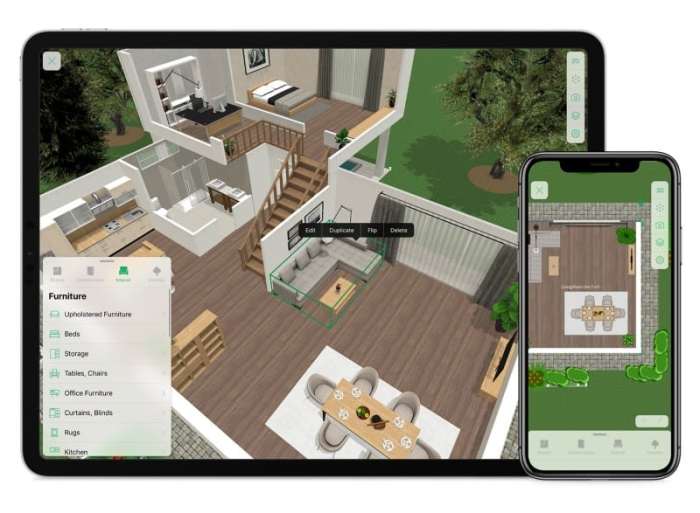
When it comes to DIY home interior projects, budgeting and cost estimation play a crucial role in ensuring the success of your endeavor. Utilizing tools and apps can greatly assist in this process, helping you plan and monitor expenses effectively.
Tips for Estimating Costs
- Research Prices: Before starting your project, research the prices of materials, furniture, and labor in your area to get an idea of the costs involved.
- Get Multiple Quotes: When hiring professionals or purchasing items, it's advisable to get multiple quotes to compare prices and choose the best option for your budget.
- Factor in Hidden Costs: Remember to account for any hidden costs such as taxes, delivery fees, or unexpected expenses that may arise during the project.
- Use Cost Estimation Tools: Take advantage of online tools and apps that can help you estimate the total cost of your project based on the materials and services you require.
Importance of Setting a Realistic Budget
Setting a realistic budget is essential to avoid overspending and ensure that your project stays within financial boundaries. By establishing a budget upfront, you can prioritize expenses, make informed decisions, and prevent any financial surprises along the way.
Tracking Expenses
Tracking expenses throughout your project is key to staying on budget and identifying any areas where costs may be exceeding your initial estimates. Utilize budgeting tools to monitor your expenses, adjust your spending as needed, and keep your project finances in check.
Last Recap
In conclusion, the realm of DIY home interior planning opens up avenues for creativity and innovation, empowering homeowners to craft spaces that resonate with their unique style and preferences. Dive into the world of design possibilities armed with the best tools and apps, and watch your interior dreams come to life.
FAQ Overview
How do these tools help in designing room layouts?
These tools offer features like drag-and-drop furniture placement, room dimension customization, and 3D visualization to help users create accurate and visually appealing room layouts.
What is the significance of color psychology in home decor?
Color psychology plays a crucial role in influencing moods, emotions, and perceptions within a space. By understanding color meanings and effects, homeowners can create atmospheres that align with their desired ambiance.
How can users visualize their designs in a real-world setting through VR and AR features?
Virtual Reality (VR) and Augmented Reality (AR) technologies allow users to superimpose virtual furniture and design elements into their actual living spaces through a smartphone or tablet camera, providing a realistic preview of how the designs will look in real life.

